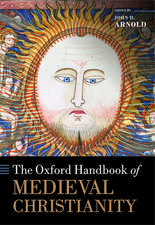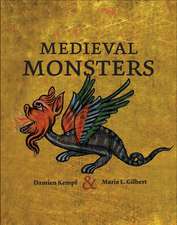Innovation and Creativity in Late Medieval and Early Modern European Cities
Editat de Karel Davids, Bert De Muncken Limba Engleză Paperback – 12 dec 2019
| Toate formatele și edițiile | Preț | Express |
|---|---|---|
| Paperback (1) | 389.66 lei 43-57 zile | |
| Taylor & Francis – 12 dec 2019 | 389.66 lei 43-57 zile | |
| Hardback (1) | 1070.52 lei 43-57 zile | |
| Taylor & Francis – 11 dec 2014 | 1070.52 lei 43-57 zile |
Preț: 389.66 lei
Nou
Puncte Express: 584
Preț estimativ în valută:
74.58€ • 76.86$ • 62.96£
74.58€ • 76.86$ • 62.96£
Carte tipărită la comandă
Livrare economică 03-17 martie
Preluare comenzi: 021 569.72.76
Specificații
ISBN-13: 9780367879419
ISBN-10: 0367879417
Pagini: 438
Dimensiuni: 156 x 234 x 23 mm
Greutate: 0.45 kg
Ediția:1
Editura: Taylor & Francis
Colecția Routledge
Locul publicării:Oxford, United Kingdom
ISBN-10: 0367879417
Pagini: 438
Dimensiuni: 156 x 234 x 23 mm
Greutate: 0.45 kg
Ediția:1
Editura: Taylor & Francis
Colecția Routledge
Locul publicării:Oxford, United Kingdom
Cuprins
Preface; Innovation and creativity in late medieval and early modern European cities: an introduction, Karel Davids and Bert De Munck; The cities of glass: privileges and innovations in early modern Europe, Corine Maitte; Craft guild legislation and woollen production: the Florentine Arte della Lana in the 15th and 16th centuries, Francesco Ammannati; New products and technological innovation in the silk industry of Vicenza in the 15th and 16th centuries, Edoardo Demo; To kill two birds with one stone: keeping immigrants in by granting free burghership in early modern Antwerp, Jan de Meester; The secret perfume: technology and the organization of soap production in northern Italy between the 16th and 18th centuries, Alberto Grandi; Textiles manufacturing, product innovations and transfers of technology in Padua and Venice between the 16th and 18th centuries, Andrea Caracausi; The spatial side of innovation: the local organization of cultural production in the Dutch republic, 1580-1800, Claartje Rasterhoff; Beyond exclusivism: entrance fees for guilds in the early modern Low Countries, c. 1450-1800, Bert De Munck and Karel Davids with the collaboration of Ellen Burm; The coopers’ guilds in Holland, c. 1650-1720: a market logic?, Janneke Tump; The early modern Antwerp coopers’ guild: from a contract-enforcing organization to an empty box?, Raoul De Kerf; The paradox of the Antwerp rose: symbol of decline or token of craftsmanship?, Annelies De Bie; Harbouring urban creativity: the Antwerp Art Academy in the tension between artistic and artisanal training in the late 17th and 18th centuries, Dries Lyna; Innovation in the capital city: central policies, markets and migrant skills in Neapolitan ceramic manufacturing in the 18th century, Alida Clemente; Innovations, growth and mobility in the secondary sector of Trieste in the 18th century, Daniele Andreozzi
Notă biografică
Karel Davids is Chair of Economic and Social History in the Faculty of Arts and the Faculty of Economics at the VU University Amsterdam, the Netherlands. His publications in English include Religion, Technology, and the Great and Little Divergences: China and Europe Compared c.700-1800 (2013); The Rise and Decline of Dutch Technological Leadership. Technology, Economy and Culture in the Dutch Republic, 1350-1800 (2008); and numerous articles on technological, economic and maritime history. Bert De Munck is a Professor in the Department of History at the University of Antwerp, Belgium. He has published on urban history, craft guilds and apprenticeship, vocational training and the circulation of knowledge, and the ’repertoires of evaluation’ regarding skills and products. His publications include Gated Communities? Regulating Migration in Early Modern Cities (2012) (co-edited with Anne Winter); Technologies of Learning. Apprenticeship in Antwerp from the 15th Century to the End of the Ancien Régime (2007); and Learning on the Shop Floor. Historical Perspectives on Apprenticeship (2007) (co-edited with Hugo Soly and Steven L. Kaplan).
Recenzii
’This is a very substantial volume in both its concept and its realization. It will expand our knowledge within the field of pre-modern craft - and pre-modern urban economy/society as a whole - and should prove to be useful for current and future discussions and research.’ Reinhold Reith, University of Salzburg, Austria
Descriere
Late medieval and early modern cities are often depicted as cradles of artistic creativity and hotbeds of new material culture. Cities in Renaissance Italy and in seventeenth- and eighteenth-century north-western Europe are the most obvious cases in point. But, how did this come about? Contributors to this volume set out to analyze whether, in what














